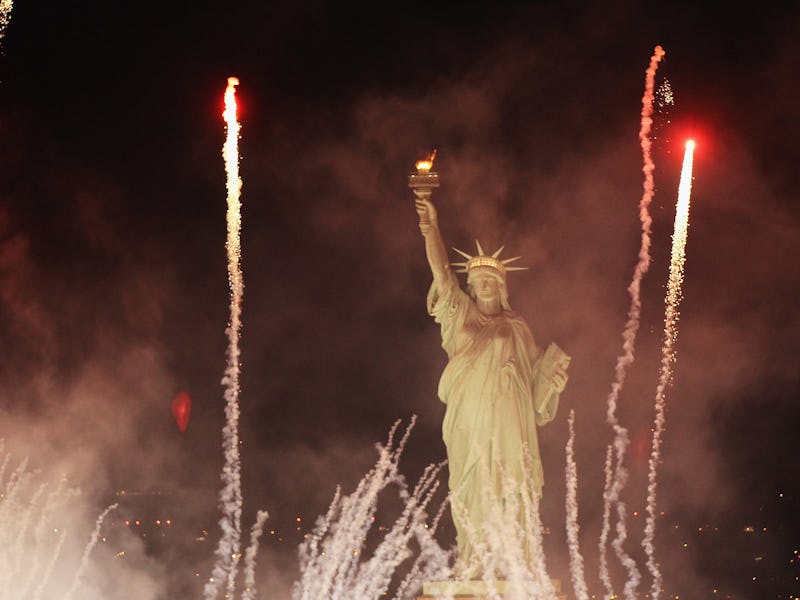July 4 Fireworks Create as Much Pollution as a 2,700-Acre Wildfire
The environmental impact of Fourth of July fireworks is remarkable.

July 4 fireworks emit the equivalent of 50,000 metric tons of carbon dioxide into the atmosphere. That’s a lot, but it’s still small potatoes in the grand scheme of things — the U.S. emits nearly seven billion tons of CO2 annually.
But fireworks still cause significant pollution, mostly in terms of gases and particulates released in the explosion that aren’t great to breathe in. Research has found that fireworks release ozone — “a secondary pollutant and greenhouse gas that is formed from molecular oxygen in the presence of sunlight and nitrogen oxides” — carbon dioxide, particulates that cause respiratory issues, and heavy metals into the air. All of these emissions have impacts in the short- and long-term. There is some research on fireworks that emit less carbon and use safer color components to alleviate this. And for an event that only truly lasts for a few hours, it has a large environmental impact, equivalent to burning several thousand acres of forest to the ground.
“On the environmental aspect of what we do, one of the biggest impacts is certainly the smoke and the volume of the smoke,” Phil Grucci, President of famous firework company, Fireworks by Grucci, tells Inverse.
Overall, the gunpowder used in the roughly 240 million pounds of fireworks bought for Independence Day releases about 50,000 metric tons of carbon dioxide. Based on estimates from the EPA, a forest fire in the continental U.S. produces 18 metric tons of carbon per acre. So the amount of carbon emissions from all Fourth of July fireworks is about equivalent to the amount of carbon produced by a single 2,700-acre wildfire in the continental United States.
Wild carbon emissions aside, fireworks have immediate impacts when they, uhh, burst on the scene. This is due to the tiny particulates fireworks release during combustion, made of tiny soot and metal particles four times smaller than a grain of pollen. The World Health Organization recommends remaining below 25 micrograms per cubic meter in 24 hours because the particulates make it hard to breathe. They also cause acid deposits, impacting buildings in cities and soil and water quality. Most places across the United States have daily averages of about 5 micrograms per cubic meter, but smog in someplace like LA causes averages around 18 and Beijing has averaged 90.
A NOAA study found that particulates in the air increase by 370 percent around July 4, jumping daily averages by 42 percent. The peak of firework action in some places can hit an hourly particulate count of about 500 micrograms per cubic meter, depending on wind. This is like spending an hour outside during one of Beijing’s worst smog days. It isn’t enough to cause long-term problems for people who don’t already have breathing trouble, but it impacts local wildlife. The smoke decreases visibility, contains heavy metals that can make water sources toxic, and can acidify plants and soil systems, which decreases the amount of food in an area of animals.
There is research on fireworks to try and decrease the environmental impact. Fireworks by Grucci now uses biodegradable polymers in their firework casings to help reduce the long-term damage caused by particulates, says Grucci. Researchers are working to replace chemicals like potassium perchlorate, which is used in fireworks and can cause birth defects, with other kinds of salts that create brilliant colors but don’t contain toxins.
Fireworks by Grucci is working to reduce its impact using new explosive tech, says Grucci. “We are focusing on utilizing some technologies on the military side,” he says. “They are very keen on reducing the smoke generated on the launching of something. We are working on using that technology in reducing the emissions.”
Disneyland has started to use air cannons to set off fireworks instead of gunpowder, which cuts down on carbon emissions. So hopefully, in the future we can celebrate the Fourth of July without releasing the carbon equivalent of igniting four and a half square miles of forest.